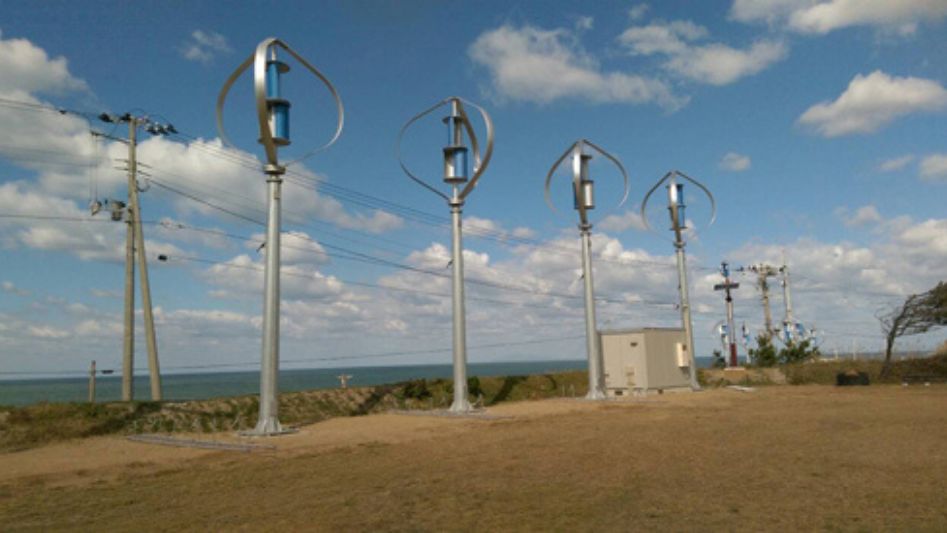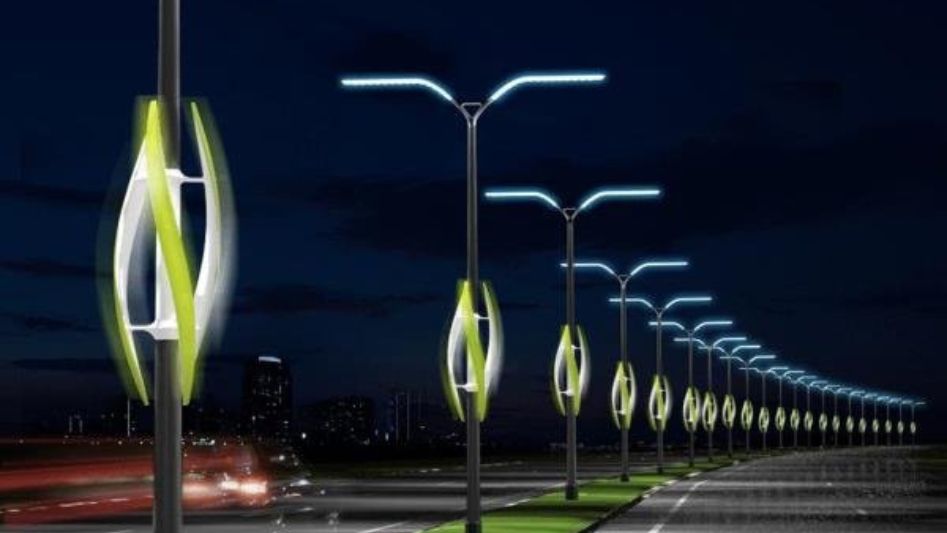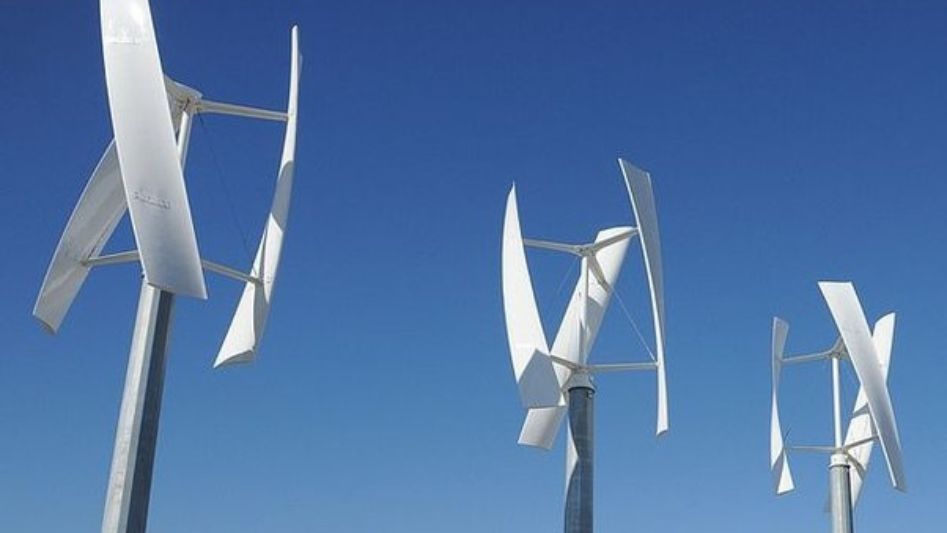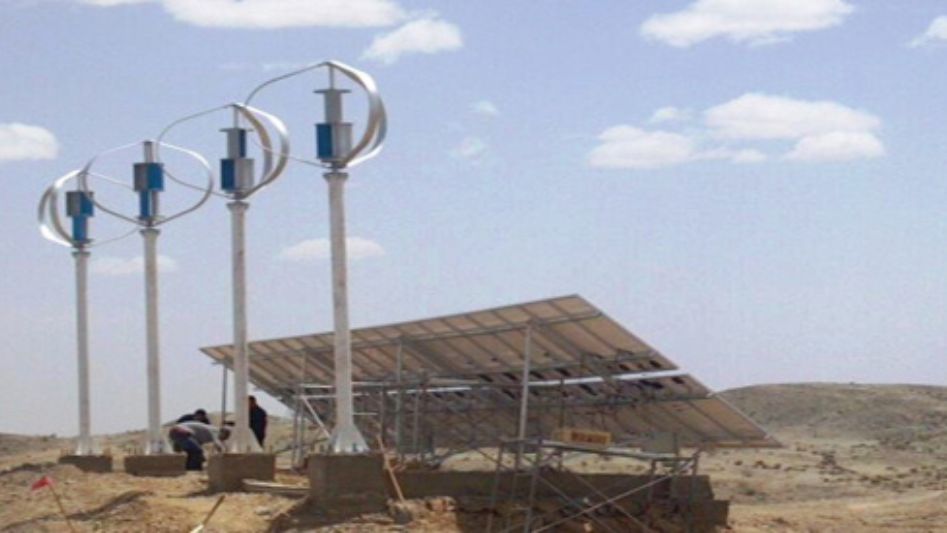Vertical axis wind turbines are the latest in wind turbine technology. As of 2017, these technologies are still in their infancy and only have a few commercially available models.
Table Of Content
- Introduction
- The Long Road To Vertical Axis Wind Turbines
- Never Give Up, Never Surrender
- A Rooftop Microgrid Solution
- Vertical Axis Wind Turbines Are Already Floating
- Conclusion
- FAQ
- You May Also Like
- External Links
The 1980s were not the heyday of vertical-axis turbines; nonetheless, these machines are making a comeback and growing in size. That can take some people by surprise. A short time ago, the innovation was only useful for specialised applications and was almost completely disregarded as a viable option. Now, they are getting ready to experience a fresh growth surge in the rooftop field and getting ready to head out to sea.

The Long Road To Vertical Axis Wind Turbines
For those unfamiliar with the subject, vertical-axis wind turbines are designed to have curved blades that revolve around a vertical pole in the centre of the machine. In the 1980s, the Sandia National Laboratory, which is part of the United States Department of Energy, conducted research on a design that, when enlarged, resembled an egg beater. This research may be seen in the photo at the top of this article.
The concept was later abandoned in favour of the more conventional wind turbine used today, which has no resemblance to an egg beater. Traditional wind turbines have perfectly straight blades and revolve in front of a horizontal axis positioned at the very top of a tall, skinny tower.
At the lower end of the scale, activity along the vertical axis continued to be observed. About ten years ago, when prominent property owners and tenants were looking for new ways to advertise their green profiles, it gave off the appearance of being ready to take off as a business. When viewed from the street, rooftop solar arrays are not very noticeable; nevertheless, a border of wind turbines is an attention-grabbing ornament.
Both inside and outside of the vertical axis field, a wide variety of unusually shaped and sized structures were found to have emerged. Several sports franchises were among the early adopters of this technology in the United States. In 2010, the Philadelphia Eagles purchased a pair of micro wind turbines from the company UGE, and the following year, in 2011, the Buffalo Bills installed a series of tiny wind turbines around the top reaches of Ralph Wilson Stadium.
The rose lost its bloom in a short amount of time. UGE, for instance, got out of the wind business in 2016 to put more of its focus on the community solar industry. It was reported in 2019 by NBC-TV that the Eagles took the wind turbines off of Lincoln Financial Field so that they could be repaired. As of the beginning of this year, replacement plans still need to be solidified.
Never Give Up, Never Surrender
The rose has not quite lost its lustre just yet. The National Renewable Energy Laboratory of the United States Department of Energy noticed in 2019 an increase in demand for the very smallest wind turbines, which are classified as having a kilowatt of capacity or less. This was a ray of hope for the rooftop wind market.
The Energy Department has never stopped championing the vertical axis wind turbine, partly because it can be utilised in locations such as buildings and other locations for which traditional wind turbines are not suitable. The organisation has also taken care of business on the more significant end of the scale. The ARPA-E funding office announced in 2019 the start of a grant programme to foster the research and development of megawatt-scale vertical axis turbines for use in offshore wind farms.
Others have also grasped the idea of scaling things up. For example, the Norwegian business SeaTwirl is in the process of bringing to market an offshore wind turbine with a vertical axis that has a capacity of one megawatt. The company is placing its bets on the financial advantages of cramming more turbines into a single offshore array would entice wind farm developers.

On the opposite end of the spectrum is the company ARC Industries out of Massachusetts, which is marketing a vertical axis turbine with a capacity of 3 kilowatts for use on rooftops. The business has just finished installing its prototype, the Orb, on the top of a parking garage at Burlington International Airport.
A Rooftop Microgrid Solution
The scale of rooftop wind power could expand beyond the single-digit kilowatt range. The important question is whether or not it makes financial sense to install mid-scale wind turbines with a vertical axis on rooftops. Hover, a company based in Texas, has developed a “Wind-Powered MicrogridTM” rooftop combination system. This system bundles solar panels, an energy storage element, and vertical-axis wind turbines on a single rooftop.
The microgrid strategy might open up more doors for expansion in the future, but for the time being, Hover will stick with their vertical axis wind turbine that generates 36 kilowatts.
“The ground-breaking aerodynamic design employs the building as a sail and can deliver power on a commercial scale. It is installed as an array on the windward edge of the roof of a structure. “A direct drive generator has less friction than an indirect drive generator so it can run at lower cut-in rates,” explains Hover.
“The solar photovoltaic array that was put in the middle of the roof functions as a complement to the turbine array, and it generates power whenever the sun is shining,” The energy that is collected from both of these sources is then sent to Hover’s Integrated Energy Management System, where it is combined, cleaned, and converted into three-phase alternating current power. The company notes that this power is directly linked to the building management system.
The device can save any excess power thanks to an energy storage mechanism that works like a battery. Hover put the system through its paces in Florida for two years of testing. Even though there were two storms during that period, the system performed exactly as intended. In an emergency, the system might make it possible for a building to disconnect from the power grid, but this would depend on the building type and its occupants’ requirements.
If all goes according to plan, Hover will implement a new manufacturing factory in Tennessee in the first few months of the following year. This would allow the company to begin commercial production for approximately a dozen installations in the planning process.
Vertical Axis Wind Turbines Are Already Floating
Let’s look at what’s going on with the ARPA-E grant programme and then come back to transporting wind turbines with a vertical axis out to sea. In 2020, the awards recipients were disclosed, and one of them was Sandia National Laboratories. The ARCUS project was the name given to the next offshore iteration of vertical axis technologies the lab was developing.
The grant required that the new wind turbines not be fastened to the seabed but floated out to sea on platforms. This was done to avoid the vertical axis lilies.
Because they may be anchored in waterways too deep for fixed-platform construction, floating conventional wind turbines have already gained much traction as a viable alternative to this type of wind energy generation. The twist on the vertical axis is a novel one, and it has the potential to transform the game completely.
According to ARPA’s explanation, E’s vertical axis configuration of floating wind turbines has the potential to cut costs often associated with the massive, cumbersome platforms required by conventional designs.
ARPA-E enthusiastically exclaimed, “a VAWT [vertical axis wind turbine] is excellent for floating offshore sites.” [citation needed] “ In comparison to horizontal-axis wind turbines (HAWTs), it does not require yaw systems, it has improved aerodynamic efficiency, and it places the turbine’s drivetrain at a lower level, which drastically reduces the mass of the floating platform and the costs associated with the associated system.
The guy wires are tensioned instead of using a central tower, which is one of the most significant differences.
According to the ARPA explanation, E’s result is a rotor mass up to fifty per cent smaller than conventional VAWTs. This results in a significant reduction in platform and system expenses. Instead of creating the platform to prevent the turbine’s motion, the team working on the project will design the oscillating turbine-platform system so that it can function safely in extreme weather conditions while remaining within the permissible response range.
Conclusion
In terms of the performance criteria, the benefits of the VAWT are far more extensive than those of the HAWT. In VAWTs, the helical and spiral structures do not require specialised devices to compensate for the air traction they experience. Because of this, the design ends up being simpler. The material used for the blades needs to be inexpensive, low in weight, and resistant to rust. It is possible to perform real time monitoring to identify problems that are taking place in the turbines in real-time.

FAQ
What are the advantages of using VAWTs (vertical axis wind turbines)?
The Protracted Path Towards Vertical-Axis Wind Turbines, as Illustrated by an Image (VAWT)
less expensive to manufacture than turbines with a horizontal axis. Compared to other types of wind turbines, it is simpler to install. Mobile and able to be moved from one place to another. Installed with blades that rotate slowly, reducing the danger to both people and birds.
What was the key to HAWT’s victory over VAWT?
HAWT have a larger efficiency than VAWT when harvesting energy from the wind force. This is due to the design of the HAWT, which enables it to drain the energy through the whole revolution of the blades when it is positioned in an environment with a continuous wind flow. Additionally, it is impervious to the effect of backtracking.
Is VAWT a more desirable option than HAWT?
In actual use, VAWTs have a cost of energy that is roughly equivalent to that of HAWTs. Nevertheless, a VAWT is better than a HAWT in certain functioning regions, such as in an urban environment characterised by strong winds or a location characterised by severe limitations on available space.
You May Also Like
- Windmills: Definition, History, Types & Facts
- What Is A Helical Wind Turbine?
- Are Vertical Axis Wind Turbines Really The Future?
- The Future of Wind Turbines? No Blades
- Windmill vs. Wind Turbine: What’s the Difference?
External Links
- Roadside Vertical Axis Wind Turbine (VAWT): An Effective Evolutionary Design for Australian Highway Commuters with Minimum Dynamic Stall
- Overview of Vertical Axis Wind Turbine (VAWT) is one of the Wind Energy Application
- WHAT IS VERTICAL AXIS WIND TURBINE (VAWT) AND HOW DOES IT WORK?
- Increasing the Power Production of Vertical-Axis Wind-Turbine Farms Using Synergistic Clustering
- Vertical Axis Wind Turbines Tower Dynamics and Noise

